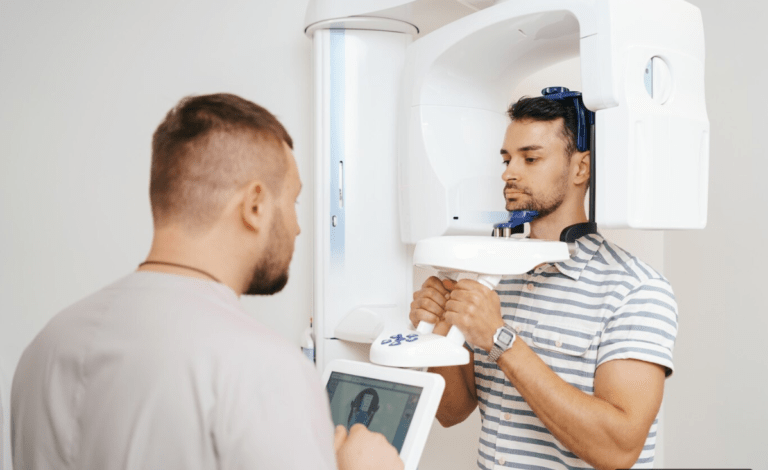Yoga, a timeless practice of physical and mental discipline, is cherished by millions worldwide for its numerous health benefits. Among the many postures in yoga, some are more challenging and rewarding than others. One such advanced pose is the “Double Downward Dog” (also known as “Double Down Dog” or “Partner Downward Dog”). It’s a variation of the classic Downward Dog pose, designed for two practitioners to work together in harmony, creating a dynamic and engaging experience that builds strength, flexibility, and trust.
What is the Double Downward Dog Yoga Pose?
The Double Downward Dog is a partner yoga pose that involves two individuals, one assuming the traditional Downward Dog position while the other inverts on top, forming a “V” shape with their bodies. The bottom practitioner (the one in the Downward Dog) supports the other practitioner, creating a unique and cooperative yoga flow. The pose not only builds strength and flexibility but also fosters a sense of connection and trust between partners.
The Double Downward Dog Pose draws from the principles of alignment, balance, and core strength, making it a dynamic practice for both the body and mind. The two participants work together in unison to maintain the pose while coordinating their movements and breathing.
Benefits of the Double Downward Dog Yoga Pose
The Double Downward Dog offers a wealth of physical and mental benefits. Here’s a look at some of the key advantages of incorporating this pose into your practice:
Enhanced Core Strength
Both participants must engage their core muscles to maintain stability and balance. The practitioner in the Downward Dog uses their core to hold the pose, while the practitioner above strengthens their core to support their body and remain balanced.
Improved Flexibility
The Double Downward Dog encourages deep stretches for both participants. The bottom person experiences a more intense stretch through the back, hamstrings, and calves, while the person on top stretches their shoulders, hips, and spine.
Increased Upper Body Strength
The practitioner on the bottom works their arms, shoulders, and upper back as they hold the Downward Dog position. The person on top builds upper body strength as they balance and engage their arms and shoulders to remain stable.
Builds Balance and Coordination
Since the Double Downward Dog requires both practitioners to work together, it helps to improve balance and coordination. The key to success in this pose is synchronization, and the more you practice, the better you will become at finding balance within the movement.
Fosters Trust and Connection
One of the most unique aspects of the Double Downward Dog is its focus on trust and cooperation. The pose allows practitioners to build trust as they depend on each other for stability. This makes the pose a great tool for building a deeper connection with a yoga partner, whether it’s a friend, a spouse, or a fellow practitioner.
Mental Focus and Clarity
The need for concentration and mental awareness in this pose can promote mindfulness and present-moment awareness. Yoga, in general, helps clear the mind, and the Double Downward Dog is no different. Practitioners must stay mentally engaged to ensure the pose is performed safely and effectively.
How to Do the Double Downward Dog Yoga Pose (Step-by-Step)
- Start with the base practitioner in a traditional Downward Dog position with hands shoulder-width apart and feet hip-width apart.
- The second practitioner steps over the first, placing feet on their hips and aligning their body above the bottom practitioner.
- Engage the core and straighten both legs to form a balanced “V” shape, maintaining a strong, stable position.
- Ensure proper communication and trust between partners to maintain alignment and balance during the pose.
- Hold the position for several breaths before slowly exiting the pose, with the top practitioner stepping off first.
Variations of the Double Downward Dog
As with many yoga poses, the Double Downward Dog can be modified for different levels of experience. Here are some variations to try:
One-Legged Double Downward Dog
Instead of having both legs grounded, one of the top practitioners can lift one leg to stretch the hamstring and create a more challenging variation. The remaining practitioner in the Downward Dog will continue to support the position.
Double Downward Dog with a Partner Twist
To deepen the stretch and increase flexibility, the bottom practitioner can incorporate a gentle spinal twist while maintaining the Downward Dog position. The top practitioner can follow suit by twisting their upper body.
Assisted Double Downward Dog
For beginners or those who feel unsteady, the top practitioner can hold onto the bottom practitioner’s ankles for extra stability, creating more control and safety in the pose.
Conclusion
The Double Downward Dog yoga pose offers a fun and effective way to deepen your yoga practice while enhancing physical strength, flexibility, and mental clarity. By working together with a partner, you can improve your balance, foster trust, and strengthen your body in new ways. Whether you’re looking to build core strength, deepen your stretches, or simply enjoy the sense of unity with a yoga partner, the Double Downward Dog is an excellent addition to your yoga repertoire.












